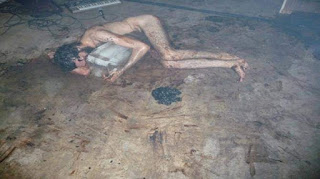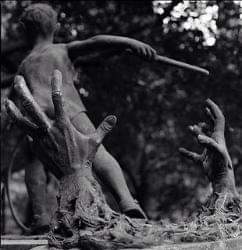The Great Leap Forward was one of the most destructive man-made disasters in human history
The Great Leap Forward was one of the most destructive man-made disasters in human history; causing at least 45 million unnecessary deaths. New data became available in the past few years that sheds light on how much worse the damage was than previously believed:
“Between 1958 and 1962, China descended into hell. Mao Zedong, Chairman of the Chinese Communist Party, threw his country into a frenzy with the Great Leap Forward, an attempt to catch up with and over-take Britain in less than fifteen years. By unleashing China‘s greatest asset, a labour force that was counted in the hundreds of millions, Mao thought that he could catapult his country past its competitors.
Instead of following the Soviet model of development, which leaned heavily towards industry alone, China would ‘walk on two legs': the peasant masses were mobilized to transform both agriculture and industry at the same time convening a backward economy into a modern communist society of plenty for all. In the pursuit of a utopian paradise, everything was collectivized as villagers were herded together in giant communes which heralded the advent of communism.
People in the countryside were robbed of their work, their homes, their land, their belongings and their livelihood. Food, distributed by the spoonful in collective canteens according to merit, became a weapon to force people to follow the party's every dictate. Irrigation campaigns forced up to half the villagers to work for weeks on end on giant water-conservancy projects, often far from home, without adequate food and rest.
The experiment ended in the greatest catastrophe the country had ever known, destroying tens of millions of lives...
A new archive law has recently opened up vast quantities of archival material to professional historians fundamentally changing the way one can study the Maoist era...
What comes out of this massive and detailed dossier transforms our understanding of the Great Leap Forward. When it comes to the overall death toll, for instance, researchers so far have had to extrapolate from official population statistics, including the census figures of 1953, 1964 and 1982.
Their estimates range from 15 to 32 million excess deaths. But the public security reports compiled at the time, as well as the voluminous secret reports collated by party committees in the last months of the Great Leap Forward, show how inadequate these calculations are, pointing instead at a catastrophe of a much greater magnitude: this book shows that at least 45 million people died unnecessarily between 1958 and 1962...
Thanks to the often meticulous reports compiled by the party itself, we can infer that between 1958 and 1962 by a rough approximation 6 to 8 per cent of the victims were tortured to death or summarily killed - amounting to at least 2.5 million people. Other victims were deliberately deprived of food and starved to death. Many more vanished because they were too old, weak or sick to work - and hence unable to earn their keep. People were killed selectively because they were rich, because they dragged their feet, because they spoke out or simply because they were not liked, for whatever reason, by the man who wielded the ladle in the canteen...
A vision of promised abundance not only motivated one of the most deadly mass killings of human history, but also inflicted unprecedented damage on agriculture, trade, industry and transportation. Pots, pans and tools were thrown into backyard furnaces to increase the country’s steel output, which was seen as one of the magic markers of progress.
Livestock declined precipitously, not only because animals were slaughtered for the export market but also because they succumbed en masse to disease and hunger...
The attempt to leap into communism resulted in the greatest demolition of property in human history - by far outstripping any of the Second World War bombing campaigns. Up to 40 per cent of all housing was turned into rubble, as homes were pulled down to create fertilizer, to build canteens, to relocate villagers, to straighten roads, to make room for a better future or simply to punish their occupants.”
Frank Dikötter
Mao's Great Famine: The History of China's Most Devastating Catastrophe, 1958–62
Picture: A 1958 picture showing peasants toiling during the Great Leap Forward











Comments
Post a Comment